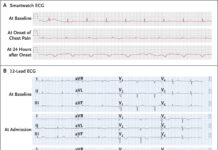Case Presentation
A 19-year-old Vietnamese girl presented to the Maxillofacial Surgery Department of the National Hospital of Odonto-Stomatology in Ho Chi Minh City. She had a periapical infection and a fistula that had formed from her left mandibular canine. The medical team interviewed both the patient and her mother to gather her past medical history.
The girl was diagnosed with strabismus when she was six months old. Doctors diagnosed her with congenital cataracts at the age of four. They performed surgery to remove her cloudy lenses and replace them with new, artificial lenses (IOLs). At 14 years old, she received a diagnosis of congenital cardiac diseases, including an ostium secundum atrial septal defect, pulmonary artery hypertension, and 4/4 leaky tricuspid valves. Additionally, an examination of the patient’s mother revealed the presence of strabismus, although doctors found no evidence of radiculomegaly on her panoramic radiograph.
Past Medical History
There was no history of genetic diseases in the family. The patient has two younger sisters with typical development. During her mother’s pregnancy, she experienced a fever and was hospitalized for a week at 22 weeks gestation, with no abnormalities detected in prenatal ultrasounds.
Clinically, the patient exhibited a long and broad face, along with a concave facial profile when viewed laterally. Physical characteristics included thick eyebrows, a broad and protruding mandible, and eye abnormalities such as strabismus and microphthalmia on the left side. Visual impairment affected both eyes, with no signs of secondary glaucoma. Furthermore, doctors observed a broad nasal tip with separation of anterior cartilage, along with a fistula on the left chin surrounded by an inflammatory area. There were no signs of hearing impairment or abnormalities in the ears. Despite normal pronunciation, the patient displayed an intellectual disability.
The patient exhibited camptodactyly and a hammer toe. No abnormalities were evident in her hands. She had normal hearing and ear structure but displayed intellectual disability despite clear speech. Radiographs confirmed the toe deformities, while her hand X-ray appeared normal.
Furthermore, the patient presented with a narrow, high-arched palate, severe dental crowding, and multiple cavities in several teeth, necessitating extractions and endodontic procedures. Additionally, glossitis was noted. Panoramic radiographs revealed severe dental crowding, malpositioning of certain teeth, retained roots, impacted teeth, and signs of radiculomegaly in some premolars. Moreover, elongated canine roots with open apices were observed in all jaw quadrants, alongside a periapical infection in the left mandibular canine.
Management
Genetic testing revealed a novel single-base deletion in the BCOR gene, indicating heterozygosity for the mutation. Doctors diagnosed her with periapical infection and OFCD syndrome. Treatment comprised root canal therapy for the infected tooth, followed by extraoral apicoectomy to address the chin fistula.
Post-surgery, the patient reported no pain or discomfort. Follow-up imaging showed no abnormalities. Four months later, the patient remained pain-free, with no adverse events recorded.
OFCD Syndrome
OFCD, a rare genetic syndrome, is marked by various abnormalities in the eyes, face, heart, and teeth. Identifying this syndrome early poses challenges. However, certain dental manifestations, like overly elongated canine roots and open apices, can be readily detected using panoramic dental radiographs.
Misdiagnoses of OFCD have occurred, with some cases mistakenly attributed to maternal rubella exposure during pregnancy. However, distinguishing features such as abnormal tooth symptoms, particularly radiculomegaly, and the absence of maternal rubella infection aid in an accurate diagnosis. Aside from the primary symptoms, OFCD patients often exhibit abnormalities in the ears (hearing impairments, protruding or underdeveloped ears), extremities (toe and finger abnormalities), and intellectual disabilities. Various BCOR gene variants have been reported in medical literature, underscoring the genetic complexity of OFCD.
In this case report, the patient’s main concern was a fistula stemming from her left mandibular canine. Subsequent panoramic radiography revealed extreme elongation and open apices in all canine teeth. Further examination unveiled abnormalities in her eyes (congenital cataracts, strabismus), face (long and narrow, with a split nasal tip), and heart (septal defect, pulmonary hypertension, leaky tricuspid valves), suggesting a potential OFCD diagnosis. Screening for BCOR gene variants confirmed a novel heterozygous deletion in intron 11.
Given these findings, doctors scheduled the patient for treatment, including extraction of root teeth, restoration of decayed teeth, root canal therapy for the affected canine, and surgical removal of the fistula on her chin. OFCD’s multisystem involvement underscores the importance of early detection to prevent oral complications and cardiac issues stemming from dental caries. This necessitates a collaborative approach across medical disciplines to ensure holistic patient care.
Conclusion: OFCD Syndrome
Oculo-facio-cardio-dental (OFCD) syndrome, also known as MCOPS2, is a rare condition characterized by abnormalities affecting the eyes, face, heart, and teeth. Dentists often play a crucial role in its diagnosis due to its association with dental issues.
Despite distinct facial and dental symptoms, the rarity of OFCD increases the risk of misdiagnosis by physicians, highlighting the need for awareness.
In summary, the patient presented with toe deformities, dental issues, and an intellectual disability. Genetic analysis identified a mutation in the BCOR gene, leading to a diagnosis of OFCD syndrome. Treatment involved dental procedures and surgical intervention, resulting in a successful outcome without complications.




